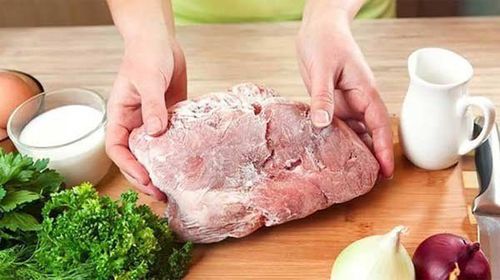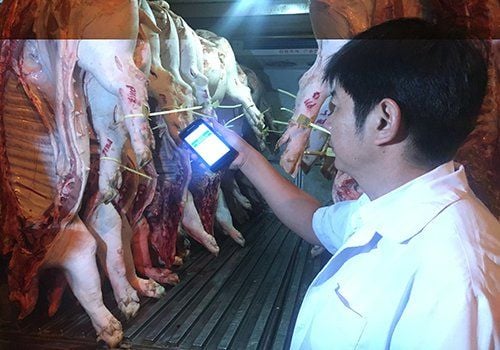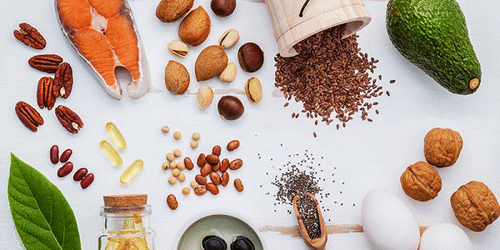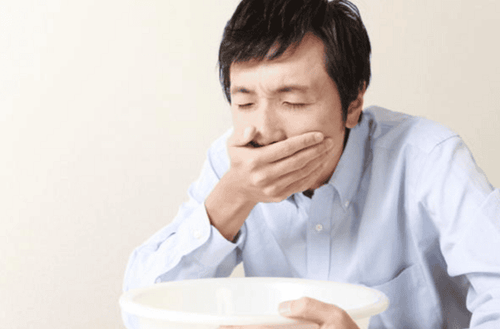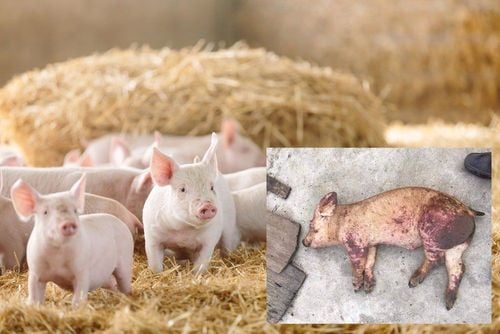This is an automatically translated article.
Knowing about safe food temperatures is important to protect yourself from botulism, allergies or food-borne illnesses. So how will the temperature affect the food used every day? The article will provide more information on food temperature danger zones, how long food can stay in danger zones safely, and safe temperature ranges for hot and cold foods.
1. Cooking temperature
Raw meat and poultry should always be cooked to a safe minimum internal temperature. So what is the cooking temperature to ensure the creation of safe food for users? In addition, the determining factor of food safety is also related to proper cooking.
For example, when grilling meat and poultry, use an oven temperature not lower than 163 degrees Celsius. Also, use a food thermometer to ensure that meat and poultry have reached a dark internal temperature. safety minimum. So for each different type of food, cooking at what temperature will keep the level of safety when used.
MORE: Roasting times and temperatures for beef, lamb and veal
Cook all raw beef, pork, lamb and veal, ribs and roasts to a minimum internal temperature of 63 degrees Celsius, are also measured with a food thermometer before removing the meat from the heat source. To ensure safety and quality, let meat rest for at least three minutes before removing from the oven or consuming. If, for reasons of personal preference, consumers may choose to cook meat at a higher temperature. Cook all raw ground beef, pork, lamb, and veal to an internal temperature of 71 degrees Celsius, as measured by a food thermometer. Cook all poultry to a safe minimum internal temperature of 74 degrees Celsius, as measured by a food thermometer. If raw meat and poultry have been handled safely, using the above recommendations will help keep the food cooked and nutrient-rich. If meat is raw, improperly processed, for example, left in the danger zone for a long time, this is a favorable environmental condition for bacteria to grow and create toxins that can cause foodborne illness.
Heat resistant poisons are not destroyed by cooking. Therefore, even when cooked, meat and poultry that has been mishandled in their raw state may not be safe to eat even when well prepared.
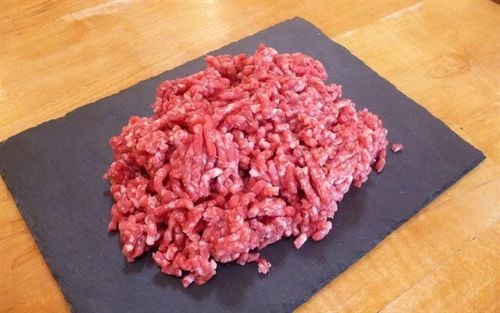
Thịt bò xay được nấu ở nhiệt độ 71 độ C
Bacteria exist everywhere in nature. They are present in the soil, air, water and foods we use. Besides, the factors of humidity, time and favorable temperature, the faster the bacteria grow in large numbers, which can cause disease. Therefore, understanding the important role temperature plays in keeping food safe is important. If we know the temperature the food has been handled, we can answer the question: "Is it safe?"
2. Danger zone
Danger zone refers to the temperature range where bacteria grow fastest on food. It is recommended that food temperatures between 5 degrees Celsius and 57 degrees Celsius represent this danger zone. Bacteria can multiply at any temperature in the danger zone, but the temperature between 21 degrees Celsius and 51 degrees Celsius is the most favorable environment for bacteria to grow and multiply. The longer food stays in the temperature danger zone, the greater the risk of bacteria growing on the food.
When food is allowed into the temperature danger zone, bacteria can grow to unhealthy levels and spoil the food. The growth of dangerous bacteria can happen without any obvious signs that the food is unsafe to consume. Food may smell and look normal, but can actually contain harmful bacteria that cause foodborne illness.
MORE: Chicken: Should it be refrozen after thawing?
4 hours is the maximum amount of time ready-to-eat food can stay in the temperature danger zone. After the 4 hour period, the food must be thrown away. Within 4 hours, foods can be consumed, reheated or chilled to bring them back to a safe temperature.
Kitchen thermometers are key to keeping food out of the temperature danger zone. By monitoring and recording food temperatures regularly, you can prevent food from being subjected to time temperature abuse. This is a must when preparing, cooking and holding food.

Trong vòng 4 giờ thức ăn có thể được hâm nóng và sử dụng lại
Follow these important tips to ensure you are making the best use of your kitchen thermometer to keep food safe to consume.
Always use the correct thermometer for the job. Never rely solely on the device's temperature display. Place the thermometer inside the refrigerator or freezer as an added safety measure. Record all temperature checks including temperature, time and operator's name. Clean and calibrate the thermometer regularly.
3. Abuse of temperature over time
Temperature abuse over time is the practice of keeping food in the temperature danger zone between 5 degrees Celsius and 57 degrees Celsius. Along with cross-contamination, time temperature abuse is a common way of causing illness. due to food. Food can be subjected to temperature time abuse in three ways:
Food is not kept or stored at a food safe temperature Food is not cooked or reheated to the temperature necessary to remove germs possible illness Hot food is not cooled properly before being placed in cold storage
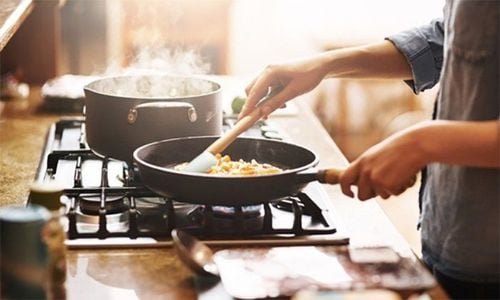
Lạm dụng nhiệt độ theo thời gian không được khuyến khích trong an toàn thực phẩm
4. What is TCS Food?
TCS stands for time/temperature control safety. Foods that require strict time and temperature control are considered TCS foods. Pathogens love TCS foods because they are an ideal environment for germs to grow and spread. Preventing TCS foods from entering the danger zone and being subjected to time temperature abuse is an important food safety practice. These are foods with a high risk of TCS that are closely monitored:
Milk and dairy products Meat and poultry Fish, and seafood including shellfish Eggshell Baked potatoes Rice, beans and cooked vegetables Tofu, soy protein or other plant-based meat substitutes Sprouts and seeds Cut tomatoes, melons, and greens Unprocessed garlic and cooking oil mixture
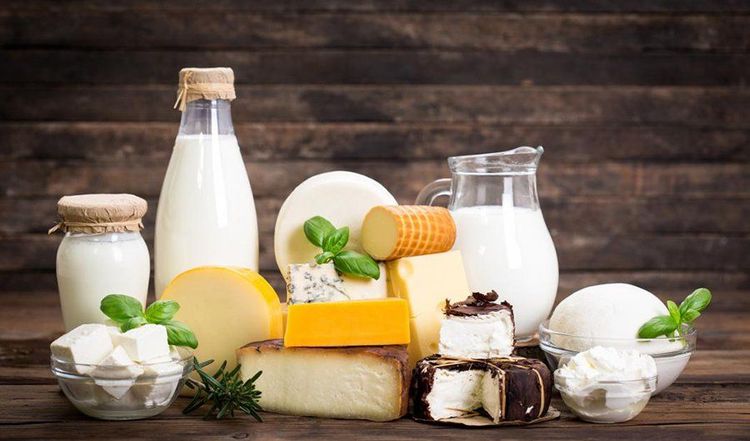
Sữa và các sản phẩm từ sữa là thực phẩm có nguy cơ cao TCS
5. Store leftovers
One of the most common causes of foodborne illness is improper cooling of cooked food. Because bacteria are everywhere, even after food is cooked to a safe internal temperature, they can be returned to the food and then reproduce. For this reason, leftovers must be placed in shallow containers for rapid cooling and refrigerated within 2 hours.
6. Reheat food
Food should be thoroughly reheated to an internal temperature of 74 degrees Celsius or until hot and steaming. In the microwave, cover the food and rotate it so that it heats evenly. Follow the manufacturer's instructions for time to warm up more thoroughly. In the absence of the manufacturer's instructions, you should allow a wait time of at least two minutes.
MORE: Does reheating leftovers in the microwave lose vitamins?
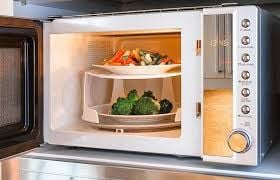
Hâm nóng thức ăn bằng lò vi sóng là một cách làm nóng nhanh chóng và an toàn.
7. Cold storage temperature
Properly handled food stored in a freezer at 0 degrees Celsius is safe. Freezing keeps food safe by slowing the movement of molecules, making it harder for bacteria to get in while the food is hibernating.
After thawing, these bacteria can become active again and multiply to levels that can lead to foodborne illness. Because bacteria on these foods will grow at the same rate as on raw foods, thawed foods need to be handled like any other perishable food.
A temperature of 4.5 degrees Celsius should be maintained in the refrigerator. Contrary to storing in the freezer, perishable foods will gradually spoil in the refrigerator. The spoilage bacteria will recognize themselves in many different ways. Food may have a non-specific odor, color and/or become sticky or mucilaginous. Potentially food-borne bacteria do not grow or grow very slowly at refrigerator temperatures. Therefore, the device thermometer should always be used to verify that the device temperature is correct.
Safe food handling practices are a good defense against foodborne illness. Because, you can know how different temperatures affect the growth of bacteria in food, and you can protect yourself and your family from foodborne illnesses by handling, properly cook and store food at safe temperatures.
Please dial HOTLINE for more information or register for an appointment HERE. Download MyVinmec app to make appointments faster and to manage your bookings easily.
References: fsis.usda.gov/shared




